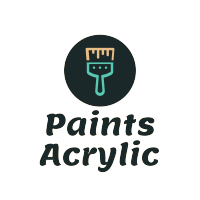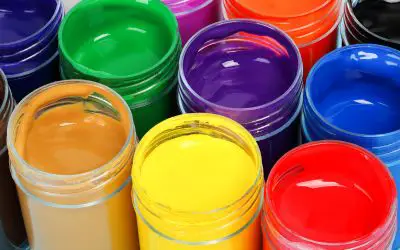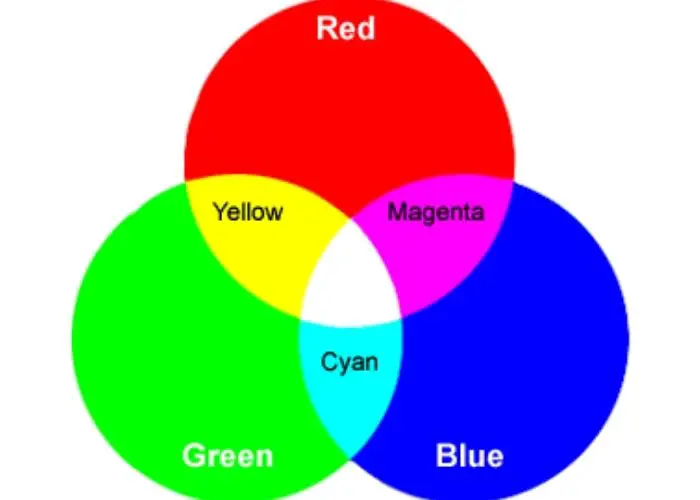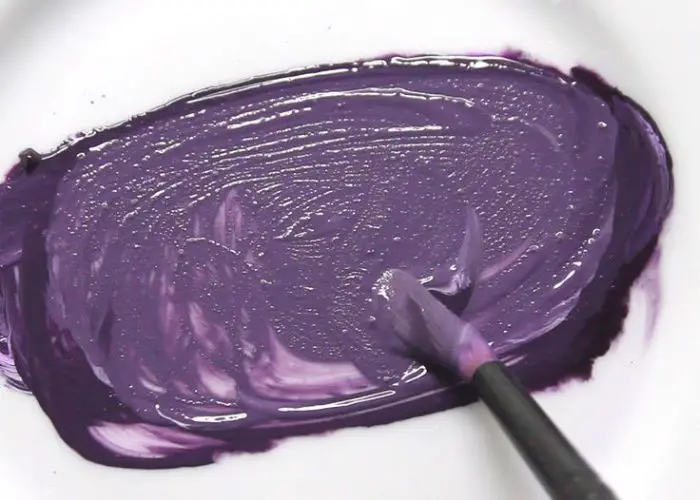While painting is a professional activity, it can also be an excellent pastime for kids and adult art lovers.
The right type of paint and set of colours can express emotion, convey ideas, and nurture talent. This goes for kids and older DIY enthusiasts.
Painting can let you explore processes and outcomes and develop novel and aesthetically pleasing works.
However, not all paints are created equal. Among the most popular types of artwork are posters and acrylic paints.
This poster vs. acrylic paint article explores the difference between a poster and acrylic paint in terms of colour and crucial aspects.
Read along.
What is the difference between acrylic and poster colours?
Poster paint offers similar usability to acrylic paint but with the added advantage of quicker drying time. This quality makes it particularly well-suited for playgroups, workshops, and art clubs, where efficiency and convenience are essential.
What is Poster Paint?
Poster paint is an inexpensive, heavily pigmented water-based paint comprising a rich pigment and glue-based binder.
Poster paint gets its name from its original purpose—it was designed specifically to be used on posters and papers.
Like all water-based paints, poster paint has a fast-drying formula, drying faster than its acrylic cousins.
When dry, this type of paint forms a matte, chalky finish. Perhaps the main downside of poster paint is its temporariness.
The paint is washable from fabric and other surfaces and naturally wears out over time, so it is not permanent.

Here is a quick summary of poster paint characteristics:
- It has a water-based formula
- It is allergen-free, so you can use it to finger paint
- It is non-toxic and low-odor.
- It is mainly used for kid’s arts and crafts projects
- It is available in many bright colours
- It cleans up easily with soap and water.
Are poster and tempera paint the same?
Yes, poster paint is a type of tempera paint. But tempera paint is generally used in the US to refer to poster paint so the terms may be used interchangeably depending on the region.
This paint type usually consists of cornstarch, starch, cellulose, and glue or gum-water as the binder.
It can come in a large jar or bottle as a thick liquid or in powder form.
What is egg tempera paint?
Egg tempera is a professional-grade or poster paint with an egg added to the formula as a binder.
Egg tempera is designed for professional use by professional artists as opposed to children.
This tempera paint type consists of a mixture of eggs and artist-grade pigments. You can buy one from a paint shop, but they are difficult to find.
So the easiest way to obtain egg tempera paint is to make yours.
What is powdered tempera paint?
As the name suggests, powdered tempera is condensed tempera paint available in powder form.
To use this type of paint, mix the powdered pigments with ingredients distilled water and eggs to create the paint.
The resulting paint can work for any artist irrespective of their skill level.
When comparing tempera paint vs acrylic, you will realize that powdered tempera requires specific preparation steps with water and eggs. Acrylic paints on the other hand come ready to use straight from the container.
What is Acrylic Paint?
Acrylic paint is a fast-drying water-based paint with pigment suspended in acrylic polymer emulsion.
Unlike poster paints, acrylic paints are permanent once applied to a surface.
They are flexible and durable, ideal for various materials or surface types, including canvas, paper, and ceramic floors.
Since water does not remove acrylic paints, you can use them outdoors and indoors.
This type of paint is highly versatile and well-suited to DIYers, professional artists, and crafters.
Depending on the formula’s number of acrylic gels, water, or pastes, these paints can resemble gouache, watercolour, or oil paints.
Can you use acrylic paint on sketchbook paper? Find out.

Here is a quick summary of acrylic paints:
- The paint is waterproof once dry
- Acrylic paints have little to no odour
- They adhere to virtually any surface
- Acrylic paints vary in consistency and sheens, from matte to glossy
- The paints are water-soluble when wet
What is the Difference Between a Poster and Acrylic Paint Colors?
The main difference between poster and acrylic paints is their permanency. Acrylic paints are permanent once dry, thanks to the acrylic gel in their formula.
On the other hand, poster paints are formulated to be temporary, so you can wash them off surfaces even after drying.
Poster paint projects also wear out and fade with time, so it is best to use poster paints for indoor projects that are not intended to be permanent.
Read more:
Difference between eggshell and flat
Difference between semi-gloss and eggshell
Poster Paint Vs Acrylic Paint Side-by-side Comparison
Poster paint and acrylic paint are water-based products. So they both dry pretty fast after application, saving you significant time. But that is as far as their similarities go.
1. Ingredients
For starters, poster paint contains a combination of pigment, a binder, and a few additives.
The binder is typically a glue or egg in the case of egg tempera paint. The pigment is usually a nontoxic substance available in powder form.
The other ingredients in these paints are calcium carbonate and preservatives. These are dissolved in water to form what we know as poster paint.
However, notice that these ingredients can vary from manufacturer to manufacturer.
While acrylic paints also use water as the vehicle carrying all the other ingredients in their dissolved state, the actual ingredients differ from poster paint ingredients.
This water-based paint comprises a suspension of pigments in acrylic polymer emulsion and silicone oils, plasticizers, stabilizers, defoamers, or metal soaps.
Like poster paint, the ingredients in your acrylic paint may vary from manufacturer to manufacturer.
2. Acrylics vs. poster paint: general uses
Poster paint is primarily used for art and craft projects on posters, hence the name.
Basic types of this paint are used in school classroom projects, theatre props, color mixing exercises, painting windows, and other similar projects.
Poster paint projects revolve around poster boards and cardboard painting.
On the other hand, acrylics have varied uses, including artwork on surfaces like canvas, wood, fabrics, metal, and ceramics.
Acrylic paint is frequently used in decorative painting works and faux finishes to decorate rooms and objects.
You can mix acrylic paints to create custom colors for various indoor and outdoor projects, even though manufacturers typically don’t specify their pigments.
3. Acrylic vs poster paint: dry time
Poster paint and acrylic paint are both fast-drying, water-based products. Specifically, poster paint dries in approximately 5 to 10 minutes.
In the drying process, water in the poster paint evaporates, leaving behind the solids making up the paint.
Naturally, air circulation, humidity, and temperature affect this drying process.
The drying time can also be shorter or longer depending on the paint’s thickness and the poster paper’s absorbency.
Acrylic paint dries to the touch in 10 to 20 minutes. This is slightly longer than the drying time of poster paint due to the heavier acrylic polymers in the paint.
Likewise, environmental conditions and the thickness of the paint directly determine how long the paint takes to dry.
4. Poster paint vs. acrylic Paint: durability
Poster paint fades over time, even though some manufacturers sell tempera paint brands considered lightfast and resistant to fading.
Such brands are sold as premium products that cost more than regular poster paints.
Other brands also say their poster paints are fade-resistant for a certain number of months, after which they begin to fade.
Fading is not a concern for acrylic paint. Once dry, the latter is permanent and water-resistant, so you can use acrylic paint on outdoor projects without worrying about color change.
The acrylic polymer in these paints remains flexible even after the paint has dried, giving it its sheen, plasticity, and permanency.
Therefore, professional artists typically use acrylic paints to create paintings meant to be permanent or last a long time.
With acrylic paint’s shelf life of 10 to 15 years, it beats poster paint’s shelf life of 2 to 5 years by a significant margin.
5. Acrylic vs poster paint: toxicity and safety
Poster paints use nontoxic pigments believed to be food-grade colorants instead of standard professional-grade pigments. This choice gives these paints a high safety profile.
Thanks to this safe formula, most poster paint brands carry the Approved Product (AP) Certification seal.
This seal indicates that children and other users can use the product without suffering health risks associated with toxic paint ingredients.
Still, the paint should not be ingested or allowed to come into contact with the eyes, as some of these ingredients can trigger allergic reactions.
Acrylic paint contains potentially harmful ingredients, making it more toxic than poster paint.
For this reason, acrylic paint is not suitable for kids. It should also not come into contact with the skin.
Related search: Is acrylic paint safe for children?
6. Surface compatibility

Poster paint is designed specifically for use on posters. It does best when used on paper, cardboard, or Papier-Mache.
You can also use this paint type on various absorbent surfaces. Since the paint is not permanent, you can expect it to wear off these surfaces over time.
In contrast, acrylic paint is permanent, and you can apply it to virtually any surface type, including paper, metal, fabric, glass, wood ceramics, canvas, plastic, mirrors, rock, and many more.
7. Poster paint vs. acrylic: opacity
Opacity is how transparent the paint appears on the surface where it is applied.
The more opaque the paint, the harder it is to see the painting surfaces through it.
Both poster and acrylic paints are high-opacity products. They are both thick and heavily loaded with pigments, making it nearly impossible to see the painting surfaces through the paint depending on its thickness.
You can create bright and vibrant projects using either of these paints.
The paints’ high opacity also means you can successfully use them to paint on colored surfaces.
Perhaps the only difference between the two paints is that acrylics are available in opaque and transparent colors, while poster paints are mostly opaque.
Therefore, you get more variety and opacity options with acrylic paints than with poster paints, which limits your options to opaque colors.
8. Washability and color lifting
One of the reasons why you can use poster paints on the skin is due to their washability.
They are fairly easy to remove from the skin or fabric by washing them off with soap and water.
Water removes poster paints from non-absorbent surfaces and hard surfaces alike.
Any poster paint spills will easily lift off the fabric, skin, or hard surfaces when dry. This quality makes cleaning easy after using these paints.
You can re-dissolve poster paints when dry and crusty, making color lifting easy with materials such as paper towels.
Acrylic paints are more permanent on surfaces and become waterproof when dry.
This means any acrylic paint stains on hard surfaces or fabric may become permanent if left to dry before removing them.
This permanence has a big advantage as it makes acrylic paints suitable for use on outdoor surfaces, even though it makes cleaning a headache.
The weather elements won’t affect the painting once it dries.
9. Ease of use for acrylic and poster paint
You can use acrylic paint in the same way as poster paint. The two paint types are easy to use, but poster paint has a speedier drying time making it relatively more user-friendly.
Additionally, since you can remove poster paint from surfaces with a damp material, correcting mistakes is much easier than with permanent acrylic paints, especially when dry.
So, while both paints are easy to use, poster paint is more user-friendly and can make your work much easier than acrylic paint.
10. Sheen and type of finish
Poster paint dries to a chalk-like, matte finish. The paint has the same sheen with no variety, so you are out of luck if you prefer any sheen other than matte.
Acrylic paint is more versatile and is available in various sheen levels. You can go for a matte or gloss finish depending on your preferences.
This way, acrylic paint offers more options regarding the sheen type than poster paint.
While both acrylic and poster paints are water-based, acrylic paint has acrylic polymers and other ingredients that give it a more glossy finish.
The gloss level in your acrylic paint depends on the amount and type of acrylic polymers and other additives in the formula.
11. Poster colour vs acrylic colour
Both acrylic and poster paint are available in various vibrant colors suitable for art projects or painting projects. However, the two paint types differ in consistency.
Acrylic paints can have different ratios of pigments, acrylic polymer binders, and additives.
These ratios determine how heavy or soft the acrylic paint body will be. Therefore, the paint can be more or less viscous with a thick body, suitable for various projects.
In contrast, poster paint comes primarily as a powder you mix with water to create medium-thick paint.
It has the same consistency with no variety in thickness to choose from.
If you want a creamy consistency like oil paint, acrylic paint is your best option.
The paint boasts a creamy consistency for the soft body types and thick, oily consistency for the heavy body varieties.
The natural thickness of acrylic paints comes from the plastic polymer in their formula. In contrast, poster paints tend to be runny with a thinner consistency, which makes them dry faster than acrylics.
12. Color mixing
Poster colors resemble gouache and are vibrant, transferring vibrancy to your painting straight from its container. For more information, read our guide on gouache paint vs acrylic.
You can also have poster colors comprising multiple pigments ideal for creating de-saturated or muddy colors by color mixing.
On the other hand, acrylics allow for endless color mixing possibilities.
Thanks to these many possibilities, acrylic paints allow you to create any color you need by mixing. You have to work fast because acrylics dry fast.
13. Price
The main advantage of poster paints is their low price. They generally cost much less than other paint types, including acrylic paints.
Compared to poster paints, acrylic paints are more expensive, with their prices varying based on the pigments in the paint chosen.
Craft and student-quality acrylic paints contain more filler ingredients and low pigment density.
As such, they are relatively low-cost than artist-quality acrylics. The latter have high-quality pigments in predominantly high density.
This premium quality of artist-quality acrylic paints drives up their prices, making them far more expensive than average poster paints.
Poster paints tend to be cheaper than low-cost acrylic paints. So they are the most inexpensive paint option regardless of quality.
Can Tempera Paint Be Used on Glass?
Yes, you can apply tempera paint to glass surfaces such as window glasses for projects intended to be temporary.
Tempera paint is removable and can effortlessly come off the glass surface when removed with warm water and a wet sponge.
Notice that the paint may not work well if the glass is tinted with a plastic film.
But you should have no problems applying the paint with a suitable paintbrush for glass with no plastic tint.
Over time, the painting will crack or flake off, with exposure to the elements likely to speed up the process.
Can Tempera be used on Clothes?
Tempera paint can be used on fabric surfaces, including clothes. However, it is important to note that tempera paint is not as durable or washable as specialized fabric paints.
The paint may not withstand frequent washing or intense friction if you plan on getting tempera paint out of clothes.
If using tempera paint on clothes, it’s advisable to apply a fabric medium or heat-set the paint to improve its longevity and washability.
Can You Use Acrylic Paint on Poster Board?
Yes, you can apply acrylic paint to poster boards. Acrylic paint adheres to nearly any surface material, including poster boasts, metal, glass, plastic, concrete, paper, and more.
It dries on these surfaces to form a permanent, waterproof painting.
The porosity of poster boards means your acrylic paint will dry quickly and become permanent.
Can I Use Poster Paint Instead of Acrylic Paint?
You can use poster paint instead of acrylic paint on some surfaces and projects and not others.
Poster paint is temporary and will eventually wear out with time. So you can only use it instead of acrylic paint on temporary projects for a playgroup, art club event, or workshop.
Will Poster Paint Work On Canvas?
Yes, poster paint works on canvas but eventually cracks and flakes off after drying.
Poster paint is not ideal for canvas paintings that are required to last or those created for commercial or professional paint purposes.
Can You Mix Tempera and Acrylic Paint?
Mixing poster and acrylic paints is possible, but doing so is not recommended.
The two are different paint types with different formulas that may not be compatible.
Therefore, mixing acrylic and poster paint might result in total waste as the ingredients interact and spoil the mixture.
Furthermore, even though they are water-based, acrylic and poster paints are different when dry.
FAQs
Which is better, acrylic or poster paint?
Unless you want something cheap and nontoxic, acrylic paint should be better than poster paint. Thanks to the plastic polymers in its formula, acrylic paint is more durable and becomes waterproof and resistant to chipping and peeling when dry. It also offers more variety in color mixing and sheen levels—you can choose your preferred finish, from matte to glossy.
What is poster paint used for?
Like watercolor paints, poster paint is primarily used for painting pictures and other temporary artwork on paper and poster material. This paint type is brightly colored and contains no oil or polymers in its formula.
What kind of paint is poster paint?
Poster paint is a distemper paint that frequently uses food-grade pigments and nontoxic ingredients such as cornstarch, starch, cellulose, and glue or gum-water as the binder. It can come in liquid form or as a powder.
Can you use tempera paint on wood?
Yes, wood is one of the materials suitable for tempera paint. The other materials that work well with this paint type include cardboard, paper, poster boards, and Paper Mache. The paint also adheres to mirrors and glass.
Does tempera paint contain allergens?
Yes, some tempera paints contain allergens, even though most are allergen-free. Allergen-free tempera paints have no egg, dairy, casein, latex, peanuts, soy, gluten, or tree nuts. You can check the list of ingredients on the product label to determine whether it contains allergens. Every popular tempera paint brand provides a list specifying the allergens in their products, so it should be straightforward to find out if the paint has allergens.
Will tempera paint fade over time?
Yes, tempera paint contains ingredients and pigments that naturally fade over time. Some of the ingredients required to make paint waterproof or fade-resistant have the downside of being toxic. So, the advantage of low toxicity in tempera paint comes with the tradeoff of fading over time. However, notice that not all tempera paint types will fade over time. Some tempera paint formulations, such as the egg tempera, are relatively durable and will resist fading over time.
Poster Paint Vs Acrylic: Final Take
Poster and acrylic paint are water-based products, but they share a few similarities that make choosing one over the other straightforward.
All you must do is understand the differences between these two water-based paints.
This guide has provided details of what sets poster paint and acrylic paint apart.
So, whether you are a professional artist or hobbyist DIYer, use poster paint in any of the following circumstances:
- When creating a temporary artwork meant for a specific event or occasion only
- When using a poster board, paper, or Paper Mache for your DIY painting
- When painting on the skin
- When the painting is not meant for sale
On the other hand, use acrylic paint when creating artist-grade paintings meant to last.
The paint is durable and permanent. This quality makes it ideal for creating projects meant to be permanent.
- Use acrylic paint when the painting is meant for sale
- Go for acrylic paint when creating an outdoor project to be exposed to the elements.
- Choose acrylic paint when toxicity is not a determining factor.










Leave a Reply